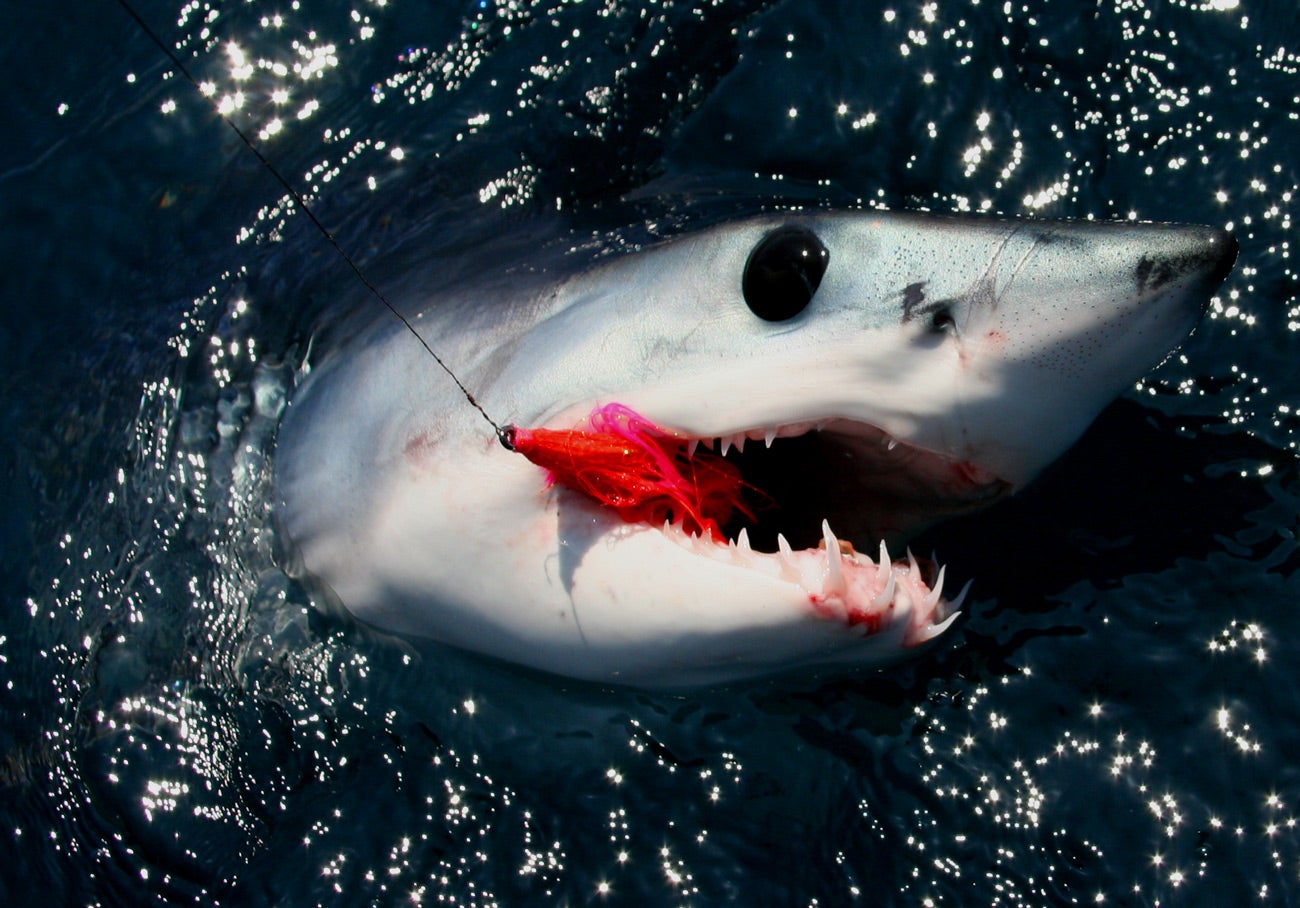Conway Bowman gets the question all the time – ‘Really? Mako sharks on the fly?’ And his response is pretty much the same:
“Mako sharks are really the only big game fish that you can consistently target on the west coast with a fly rod where you make the cast and watch the fish eat a fly right on the surface of the water,” said Conway Bowman, a professional fly fishing guide who targets blue water species. “And when I’m talking about big game fish, I’m talking about fish that are 100-300 pounds consistently. I think they are the most dynamic fish in blue water.”
Bowman is a third generation native of San Diego. But, his love of fly fishing was actually born on the river banks of Idaho where he spent his summers as a kid. Like most anglers, his passion for fly fishing evolved. But that evolution took a sharp left turn at normalcy after he read a book by Nick Cuccione in the 1990s.
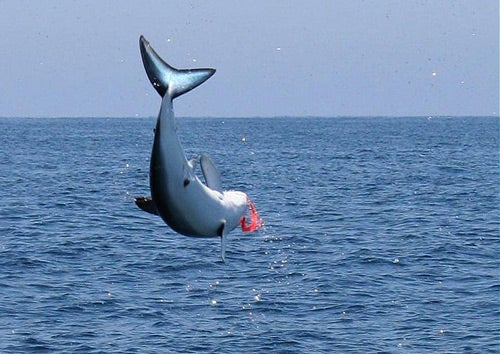
Photo: Paul Sharmen
“In the book, he had a chapter about mako shark. It had a quote that went something like: ‘The shortfin mako is the greatest adversary for the fly rod on the west coast.’ I thought to myself “Well, if he has them up in the LA area, I probably have them here in San Diego. Then, I started going out in a small boat – 16ft in length – I probably wouldn’t actually go out in the boat now. It was actually pretty stupid, the boat was that small. I’d go out about 10 or 12 miles and look for makos.”
Bowman’s explorations were not quickly rewarded.
“It took me 3 years to finally catch my first mako. But once I got my first one, I started putting the puzzle together – they show up in May, a big push happens later in July and then it tapers out in August. They then come back in October. After that they split – and I have no idea where they go. They eat bonita, barracuda, and mackral and the pacific yellowtail – and we use tube flies with big hooks to imitate their prey.”
An anglers interaction with a mako is usually fairly intimate. Most casts are within 25 to 40 ft from the boat. And if you do get to watch a mako to eat your fly, the show is just getting started.
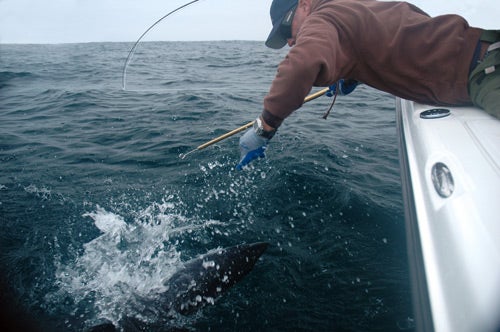
Photo: Michelle Bowman
“A mako’s run is often 200 yds right out of the gate. They have been clocked reaching speeds up to 60 mph… and then they start to jump. When they go airborne it is usually 10 to 15 ft straight vertical in the air. Sometimes they’ll do flips. And then the fight begins and it is an incredible fight.”
The shortfin mako shark is an apex predator in the Pacific Ocean. Anytime an angler connects with such a powerful creature, things tend to go awry.
“Yeah, one time I was fishing for mako from a stand up paddle board and I fell off with a shark on. I was battling a fish and it was kind of pulling me around and a wave hit me sideways and the next thing I knew I was in the water. That wasn’t good. I didn’t end up landing that fish, I just broke him off and got back on the board as fast as I could.”
You don’t have to be on a paddle board to have close encounters once a mako is hooked.
“Another time I had a shark almost jump into the boat and almost got me in the nut sack,” said Bowman with a laugh. “It wasn’t that funny then, especially to my wife, but it’s kinda funny now. I’ve also had them jump over the boat.”
Like most fish that swim in today’s oceans, makos have their own challenges. Makos are often targeted as trophies by anglers. And when this happens, it is a virtual death sentence for makos.
“San Diego is one of three breeding grounds in the world for short fin mako shark. There are a lot of juvenile fish in this area. What we have talked about with people for the last 14 years is that catch and release is the best practice – end of story,” said Bowman. “If someone wants to take a shark – it is not going to be with any of the San Diego fly guides – that’s fine. If you are going to take a fish, take a small one, not a big breeding fish. In my opinion, the current regulations are ridiculous. The regulations right now say that each angler can keep 2 fish each day. That means if someone goes out with 5 anglers they can keep 10 fish… every day. There is no reason someone should be keeping a big fish – the fly angling community here in San Diego is committed to catch and release – we will never keep a fish, we release them all. And we will continue to release them all.”
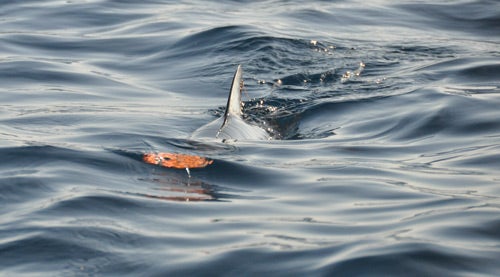
Photo: Michelle Bowman
It is clear in Bowman’s voice that this specific subject is one that he is passionate about.
“I’ve had people offer me a lot of money to kill sharks who are out with me on my boat because they want to try to get into the IGFA record books. I just tell them ‘no way, I can’t do that’.”
Bowman estimates that last year, the five commercial fly fishing guides who take fly anglers out off the coast of San Diego landed roughly 485 makos throughout the season. Every single fish was returned to the water and released unharmed.
So if you are still scratching your head saying ‘Really, mako sharks on the fly?’ – peak season is coming up in July and the fish are back again in October. Bowman and his colleagues in San Diego are accepting reservations.
Will Rice is the Director of Marketing for Trouts Fly Fishing, in Denver, Colorado. . He is a freelance journalist and a contributing editor at The Drake. He has written for the Denver Post, Salt Water Fly Fishing, FlyFish Journal, Pulp Fly, and Fly Rod & Reel, and is a regular contributor to Angling Trade Magazine.
ENHANCE YOUR FISHING EXPERIENCE with Columbia’s Performance Fishing Gear collection. Not only is it constructed for comfort and functionality, but it’s built with the angler in mind. With Omni-Shade sun protection, Omni-Freeze Zero active cooling, and drainable footwear, you’ll be able to be protected and fish for hours. Check out these products below.


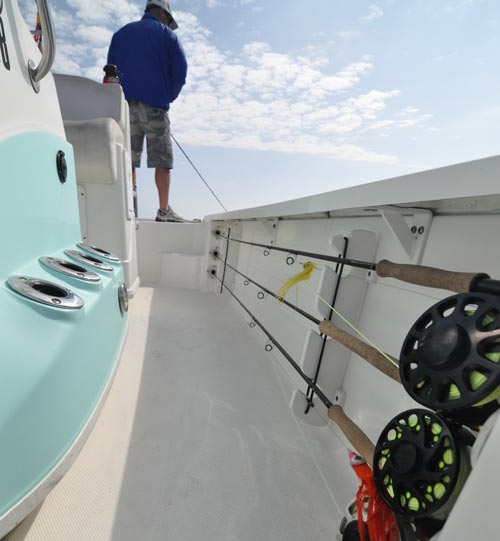
Photo: Michelle Bowman
WORDS OF WISDOM FROM A PRO. Rigging a fly rod for mako: “Even an 80 lb mako is going to kick your ass on a 14 wt.” – Conway Bowman
Rod: 12 wt or 14 wt. fly rod
Reel: find a reel with the largest arbor and a very stout drag system.
Fly Line and Backing: 500 yards of backing – 30 lb Dacron connect to a floating line – 12 or 14 wt
Leader: 6 ft tapered leader to 25 lb or 30 lb fluorocarbon connected to a 3 ft piece of fine gauge stainless steel wire –#86 stainless steel
�վ������:��8/0 or 10/0 barbless hook with a “big ass” orange tube fly attached with a haywire twist knot
Watch Tips And Tricks: Mako Shark Fishing With Conway Bowman:

